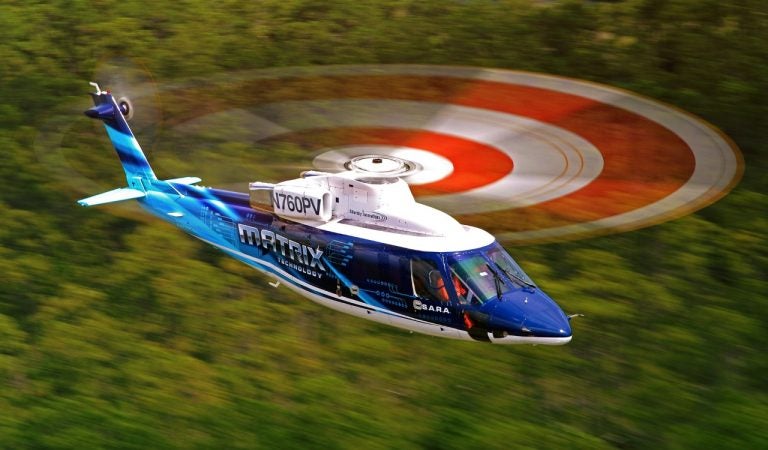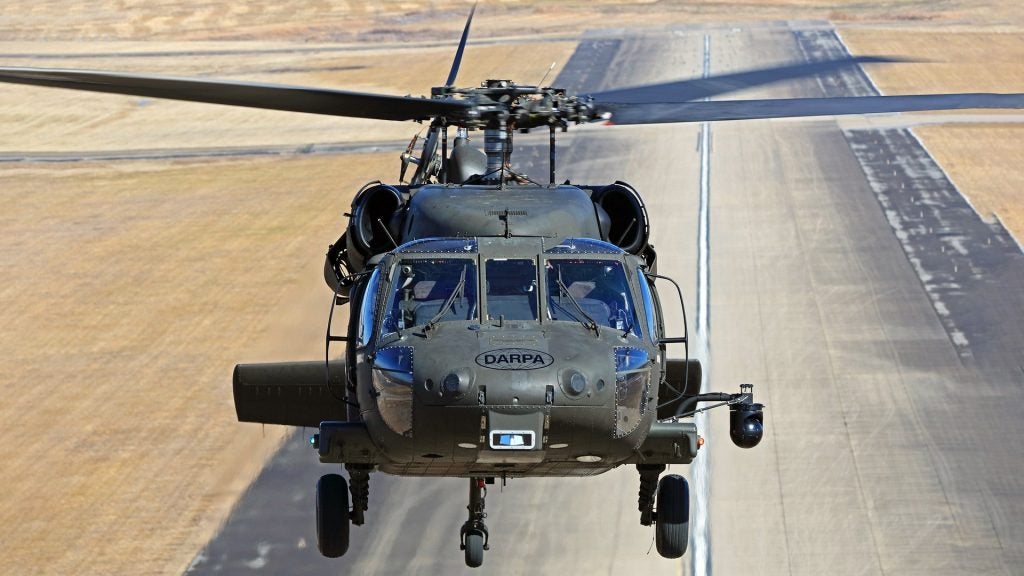DARPA Successfully Flight Tests Unmanned Black Hawk
On Saturday, 5 February, the US Defense Advanced Research Projects Agency (DARPA) successfully flew an unmanned UH-60A Black Hawk helicopter at Fort Campbell, Kentucky. This was the first time a Black Hawk has flown with no pilot on board. The flight lasted for around 10 minutes and was followed by another flight on Monday which lasted around half an hour. The automated system developed for the Black Hawk by DARPA alongside Sikorsky Aircraft Corporation is capable of operating completely independently of pilots. Starting the engine, completing pre-flight checks, liftoff and landing were all handled completely independently by the vehicle. The system is also claimed to be advanced enough to safely navigate obstacles like skyscraper-filled cities.
The helicopter was outfitted with Sikorsky MATRIX autonomy technologies developed under DARPA’s Aircrew Labor In-Cockpit Automation System (ALIAS) program. In a press conference, DARPA’s ALIAS program manager Stuart Young told Overt Defense and other media that the program’s aim is to “develop and flight demonstrate a flexible and extensible automation architecture, primarily for existing Aircraft”. This architecture is meant to improve pilot safety, aircrew mission effectiveness and cost-savings. ALIAS has been ongoing for six years, and aims to develop autonomous capabilities which can be used for a total of 14 different airframes.
In another project aimed at aiding Black Hawk pilots, DARPA are working with Northrop Grumman and the University of Central Florida on Operator and Context Adaptive Reasoning Intuitive Assistant (OCARINA), an artificially intelligent (AI) software program for the UH-60. The software combined with an augments reality headset and sensors will help pilots perform flight tasks.
The MATRIX system is deigned in a way that allows it to operate either complexly independently or with either one or two pilots on board. When a MATRIX-equipped helicopter is manned, the system handles a number of “lower-level functions” which decreased the burden on the pilot. This means they can focus on more advanced functions such as “command and control type capabilities”. The system also makes it much safer to fly in poor visibility conditions.

Unlike a human pilot, the system excels at dealing with unexpected emergencies such as the loss of one or both engines. In current helicopters, such a situation puts pilots under extreme pressure and forces them to make extremely consequential split-second decisions. The advanced physics models used by DARPA’s new autonomous Black Hawk, however, enable the helicopter to make the decision for the pilot and carry out the optimal response; it can even handle an emergency landing. Moreover, when operating completely unmanned, the helicopter can undertake missions such as nonstop water delivery when fighting a forest fire. Such continuous flight operations would be extremely taxing on a pilot but they have no effect on a fully autonomous helicopter.
The program is also expected to help save costs as the US Army hopes it will allow for shorter pilot training. Moreover, a MATRIX-equipped Black Hawk is significantly cheaper and easier to maintain. Igor Cherpinsky, Director of Sikorsky Innovations, told Overt Defense that:
“First of all […] we replaced a lot of hydromechanical components that were leaky, unreliable, simply because they were 1970s vintage design, with pretty reliable electronic components. So for example, there’s a procedure on the old Black Hawk […] called ‘rigging’ where you have to adjust the mechanical controls; its kind of like doing realignment on your car. When the steering wheel is straight you want the wheels to be straight. […] That could be very, very maintenance-heavy procedure, it can take days; that is now down to 10 minutes.”
The DARPA-Sikorsky team have also addressed issues stemming from the fact that it is possible to make an input telling the aircraft to do something it is not physically capable of doing. In this situation, expensive components are often bent or damage. Now that the team “cleaned it up”, the lifespan of some components such as rotor blades may even be doubled.
Representatives at DARPA and Sikorsky have also confirmed that they are in contact with allied nations like Japan which field and manufacture Black Hawks in order to ensure a smooth technology transfer once the MATRIX system is rolled out on a wider scale. Sikorsky has also indicated it is communicating with private-sector partners who are interested in the technology.
At this stage, the system is basically ready to be deployed for in field evaluation. The DARPA announcement regarding the flights is available here.

